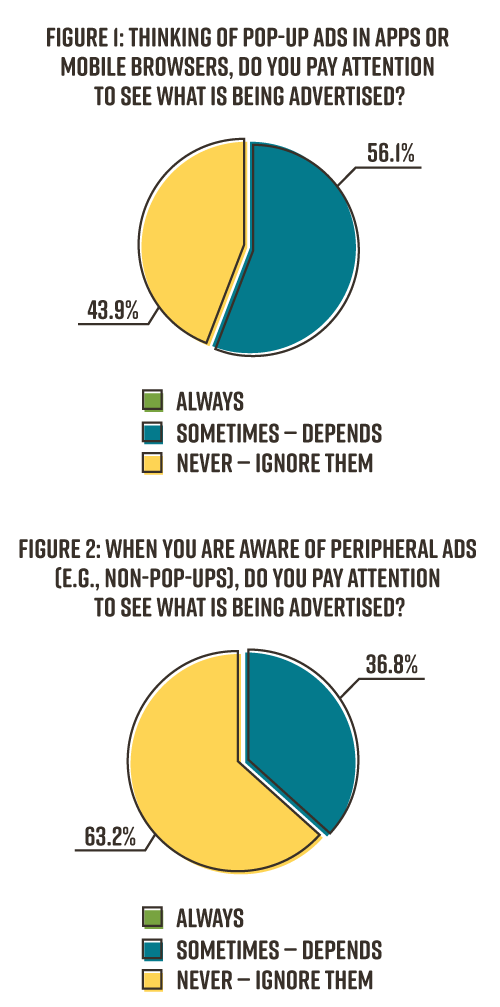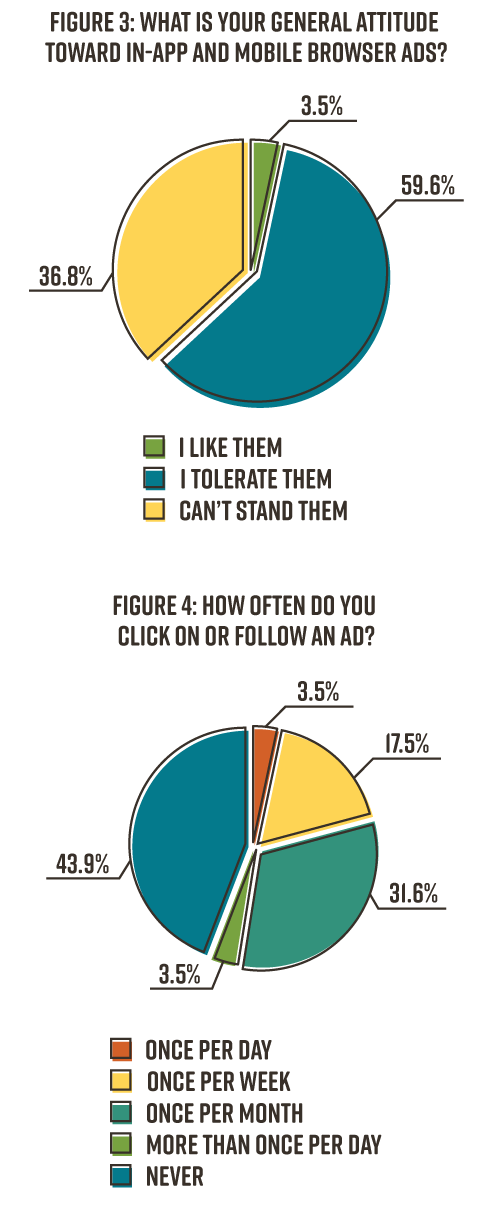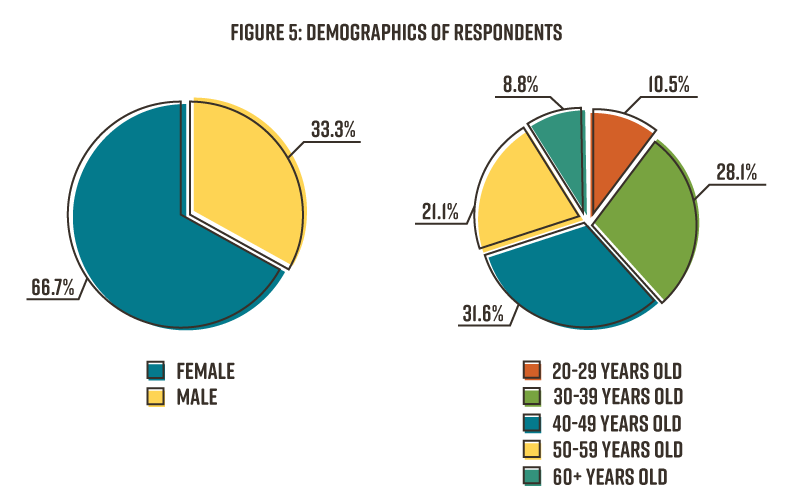[Survey] Mobile Ads: what do people see, think and do with them?
Digital Direct Marketing, Response Marketing, Trends and POVMobile Advertising: Awareness, Attitudes, and Behaviors
There’s no disputing that everyone is on mobile these days. Exposure to mobile ads, both in apps and mobile browsers, is an immediate byproduct. With each new click, page load, scroll, or duration, you’re almost guaranteed to see an ad. It’s become par for this now-established-yet-still-evolving course.
Because of the medium’s newness, many believe mobile advertising only works for certain products, services, businesses, or audiences. I happen to disagree with that. With the right targeting, any product or service can benefit from mobile advertising. If you’re not using it as a channel, you’re likely missing out while others (including your competitors) are racking up the views.
To test this theory, I sent a survey to my office colleagues. What are their attitudes and behaviors toward mobile ads? How aware are people of mobile and in-app ads? Do they notice them? If so, are they influenced by them?
 More than 50 people participated in my informal survey. (Demographics of the sample can be found in Figure 5 toward the end of this post.) The results were quite revealing and should give anyone with something to sell something to think about.
More than 50 people participated in my informal survey. (Demographics of the sample can be found in Figure 5 toward the end of this post.) The results were quite revealing and should give anyone with something to sell something to think about.
Awareness: Do People Really See Ads?
I first wanted to gauge awareness of mobile advertisements. Yes, we are all aware of ads – both online and offline – but how much are we consciously paying attention to them? Do we see them, or have we trained our brains to ignore them?
Figures 1 and 2 indicate no one actively seeks out ads that either pop up to take over the screen (forcing you to sit through an ad, or wait for the prompt to skip or close it) or messages that lurk elsewhere on our screens.
So yes, we’re all aware of mobile ads. Roughly half of us do pay attention to them from time to time. Interestingly, results show peripheral ads get a slightly higher level of awareness than traditional pop-ups that once dominated the scene. Why? One theory: over time, we’ve been overwhelmingly served pop-up ads to the point that we’ve become desensitized. We’ve closed, skipped, or ignored them for so long (not to mention using ad blockers and other tools that mitigate them altogether), it’s possible that pop-up ads are like that old piece of furniture in the corner of the room. You want to get rid of if, but it’s been there for so long that you stop even noticing it. A theory supported by the fact that not a single person responded they
always
pay attention to mobile ads.

Attitudes: “X” Marks the Spot Where We Close in on What People Think.
When asked about attitudes toward mobile advertising, unsurprisingly the overall sentiment followed suit with traditional advertising. That is, people don’t want to be advertised to. It’s uninvited and intrusive. It arrives in our mailboxes, cars, and homes via radio and TV, billboards, and now on our personal mobile devices. Almost instinctively we ignore, mute, close, or fast-forward through whatever advertising is presented to us.
Looking at the numbers in Figure 3, you see a majority of people tolerate them. A smaller percentage of people actually admit to liking them and finding them useful!
We’ve explored awareness and attitude factors concerning mobile ads. Now, what do people actually do when ads inevitably appear? This is where the rubber hits the road …
Behaviors: What Do People Actually Do With Ads? The most interesting survey data involves how people respond to mobile advertising, especially given their stated attitudes and feelings toward them. Although most of us don’t want to be advertised to, we still engage with and are receptive to advertising – offline or digital – when it’s done right. Want it or not, it is here. And it is influencing our behaviors. More than half of respondents say they click or tap a mobile ad for more information at least once per month – and as much as once per day.
Demographics: Who Are the People Seeing Your Ads? One of the more revealing parts of this survey regards age demographics. The average age of participants is between 30–50 years old. That runs counter to an oft-touted belief that only Millennials are effectively reached via mobile and digital advertising strategies. In fact, Millennials were one of the smallest survey subsets. They comprise a little more than 10% of the sample. The majority of respondents fall between 30 and 60 years old. Over 50% were aged 40-69, which may further shatter some preconceived misconceptions around mobile advertising targeting and strategies.
What Does It All Mean? Your Ad Should Go Here.
What did the survey reveal? First, while mobile ads may be annoying, at times we do find them useful, whether we admit it or not. We engage and receive mobile ads when – as with all advertising – they deliver the right message to the right person at the right time.
The survey results also tell us there is an audience for everything. No matter which industry or age group you target. Retail, health care, insurance, whatever … targeting younger generations across the country or Baby Boomers in a specific metro area … the bottom line is that a mobile strategy is the appropriate thing to do. If your business isn’t there, that space will be filled by someone else. Very likely, it will be your competitor.
If you are including mobile in your marketing strategies, make sure you’re keeping up with industry trends and emerging technologies. Mobile is most definitely not a “set it and forget it” type of thing. Make sure you’re targeting your mobile advertisements the same way you would with DRTV or print to reach a targeted audience via the appropriate channels.
Want to learn more about how DMW Direct can help integrate mobile advertising into your next campaign? Read more here or contact us.